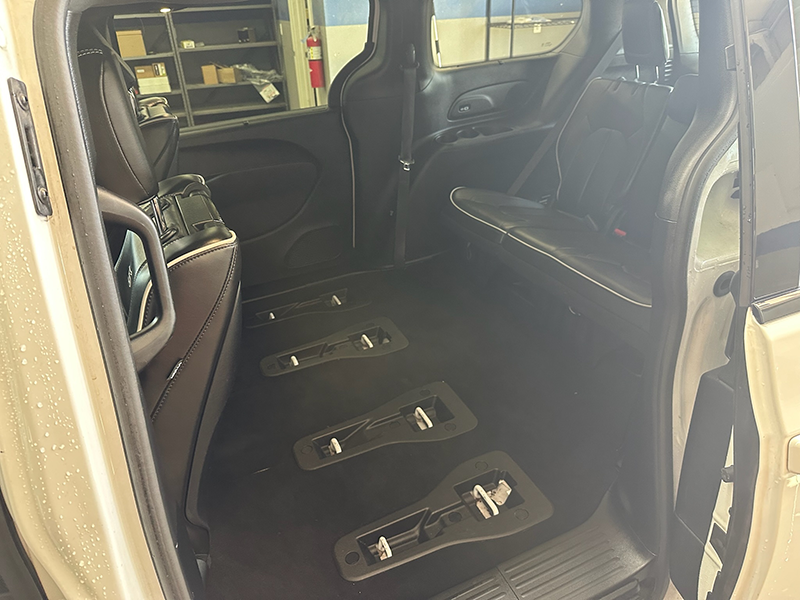Driving on slippery roads or in hazardous weather conditions can be challenging, even for the most experienced drivers. In such situations, staying in control of your vehicle becomes a priority, and that’s where traction control comes into play. Modern vehicles come equipped with various safety systems, but traction control is one of the most essential features for ensuring stability and control, particularly on wet or icy roads. But how exactly does it work, and why is it so important for improving driving safety? Let’s take a closer look.
What Is Traction Control and How Does It Work
Traction control is a vehicle safety system designed to prevent your wheels from spinning when they lose grip on the road. This system is especially useful when you’re driving on surfaces that provide little friction, such as rain-soaked streets, icy highways, or loose gravel. The primary purpose of traction control is to help drivers maintain control by reducing the risk of wheel spin, which can lead to loss of steering control and potential skidding.
But how does it do that? The traction control system uses sensors placed on each wheel to detect if one or more wheels are slipping. When a loss of traction is detected, the system either reduces the engine’s power or applies braking force to the slipping wheels, ensuring that the car remains stable and continues moving forward in the desired direction. This all happens within milliseconds, making traction control a critical component of modern car safety systems.
Key Benefits of Traction Control for Driving Safety
Traction control is more than just an add-on feature—it’s a game changer when it comes to staying safe behind the wheel. Here are some of the key ways it enhances driving safety:
Prevents Wheel Spin
One of the most obvious benefits of traction control is its ability to prevent wheel spin. This is particularly useful when accelerating from a standstill, especially on slippery surfaces. Without traction control, the wheels could spin out, making it difficult to gain forward momentum. By regulating wheel speed, the system helps drivers maintain control of the vehicle when starting from a complete stop.
Maintains Vehicle Stability
Keeping your vehicle stable is vital when driving in difficult conditions, and traction control plays a key role in that. By preventing the wheels from losing grip, traction control helps maintain the overall stability of the vehicle, ensuring you don’t skid or slide sideways. This is especially important when making sharp turns or driving on uneven road surfaces.
Enhances Steering Control
Losing traction can lead to oversteering or understeering, both of which compromise your ability to navigate the car effectively. Traction control prevents these issues by ensuring that all four wheels maintain as much contact and grip as possible with the road. This means you can steer more confidently, even when road conditions are less than ideal.
Reduces the Risk of Accidents
Since traction control helps to keep your vehicle from losing grip, it significantly reduces the likelihood of accidents caused by skidding or sliding. Whether you're driving in heavy rain, snow, or mud, traction control provides an extra layer of safety that makes it easier to stay on course and avoid collisions.
When Do You Need Traction Control the Most
Traction control is not something you typically think about when driving in perfect conditions. However, there are specific scenarios where this system is indispensable:
- Wet or Icy Roads: Wet surfaces reduce the friction between your tires and the road, making it easier for wheels to lose traction. Traction control ensures that you don’t slip, even in these slippery conditions.
- Driving on Gravel or Dirt Roads: Loose surfaces like dirt, gravel, or sand can cause your wheels to spin out of control. Traction control helps to stabilize your vehicle by limiting wheel spin, making off-road driving safer.
- Sharp Turns and Corners: When making quick or tight turns, especially in bad weather, traction control helps prevent loss of grip, allowing you to maneuver safely without sliding out of your lane.
Does Traction Control Replace Good Driving Habits
While traction control is a fantastic safety tool, it’s important to understand that it doesn’t replace good driving habits. The system can only do so much to improve grip and prevent wheel spin. It doesn’t make your car invincible to the dangers of poor driving conditions or reckless behavior on the road.
Drivers should still exercise caution when driving in hazardous conditions. Slowing down, maintaining a safe distance from other vehicles, and paying close attention to road conditions are all essential elements of safe driving, even when your car is equipped with advanced safety features like traction control.
Common Misconceptions About Traction Control
Many drivers are under the impression that traction control is only useful for low-speed situations in the winter or that it’s unnecessary for city driving. However, traction control is beneficial at all speeds and in various situations. For example, traction control can activate even when you're driving at low speeds, such as when you're starting from a red light on a wet road.
Another misconception is that traction control can fix all your driving issues, which simply isn't the case. While it’s a helpful safety tool, it won’t save you from all hazards—particularly if you’re driving aggressively or too fast for the road conditions.
Want to ensure your vehicle’s safety features are fully operational? Visit
The Garage Automotive Solutions for a complete vehicle inspection. Our expert team will check your traction control system, brakes, and more to keep you safe on the road. Schedule an appointment today!










